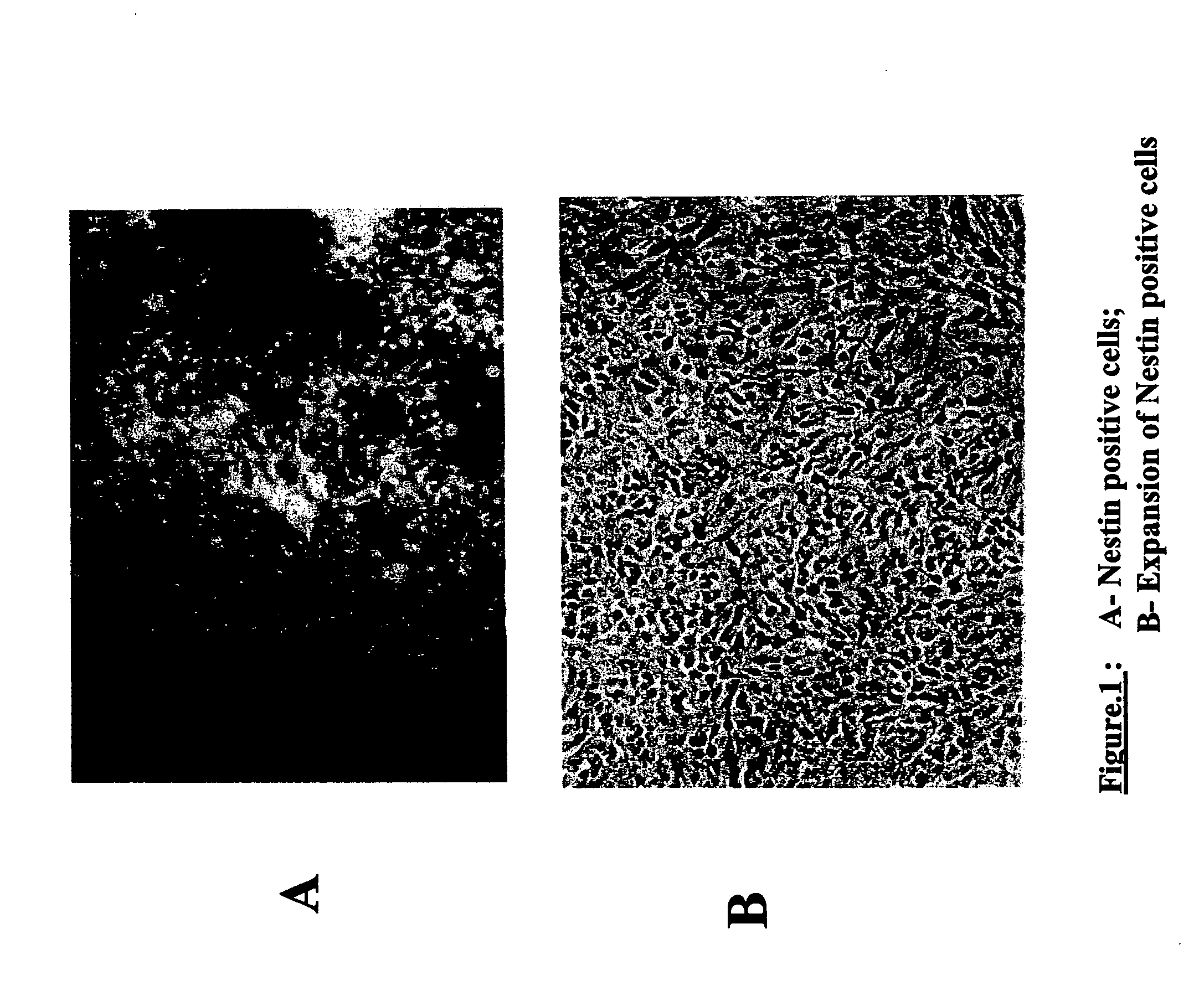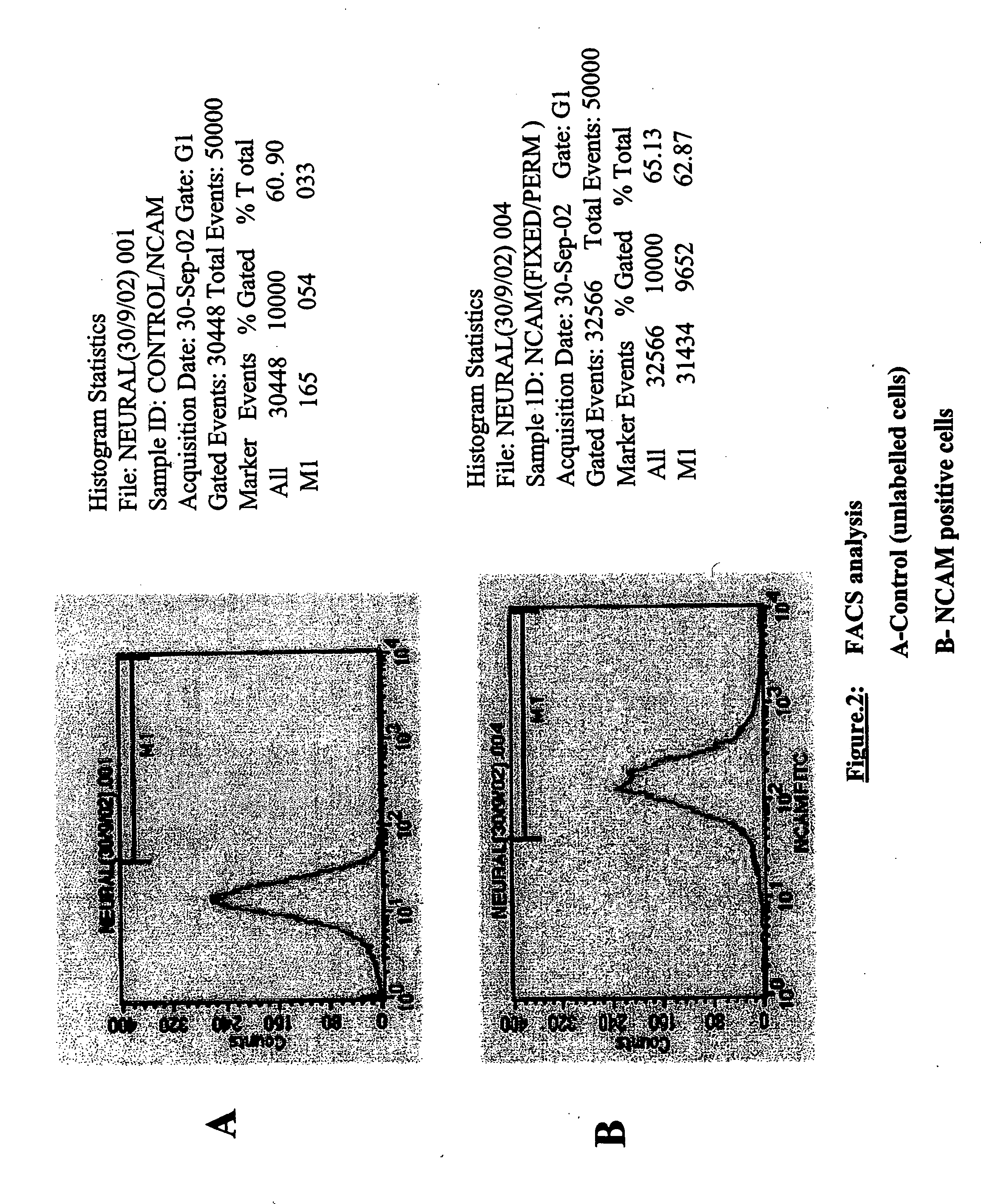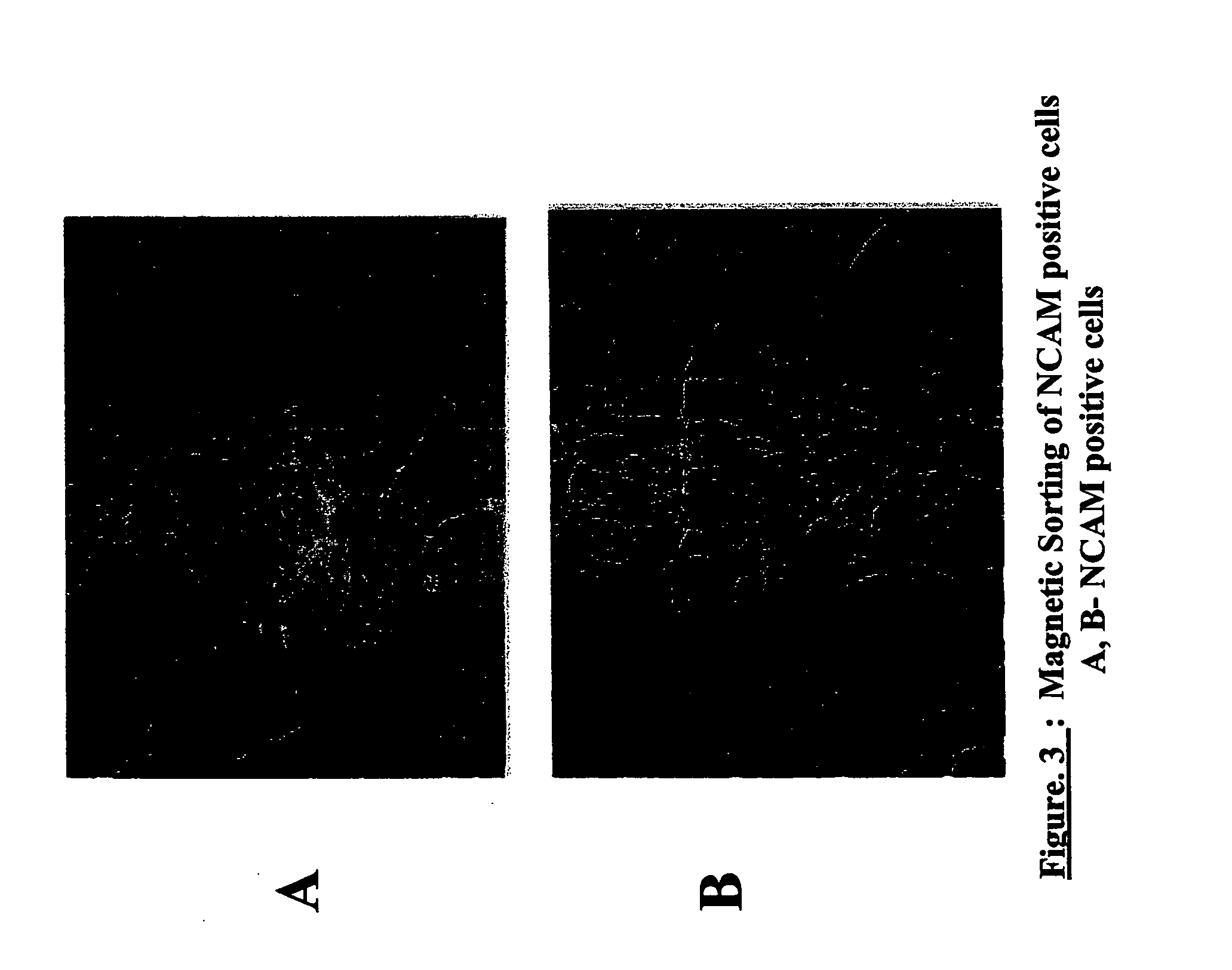Derivation of terminally differentiated dopaminergic neurons from human embryonic stem cells
a technology of embryonic stem cells and dopaminergic neurons, which is applied in the field of derivation of terminally differentiated dopaminergic neurons from human embryonic stem cells, can solve the problems of widespread brain dysfunction, significant side effects, and movement impairments that characterize diseas
- Summary
- Abstract
- Description
- Claims
- Application Information
AI Technical Summary
Benefits of technology
Problems solved by technology
Method used
Image
Examples
example 1
[0110] In the following example, applicants of the present disclosure demonstrate the derivation of functional dopaminergic and serotonergic neurons from human embryonic stem cells.
[0111] 1) Human Embryonic Stem Cells:
[0112] To begin, human ES cells were isolated from the inner cell mass of a human blastocyst. The human pluripotent ES cells were derived from excess human blastocysts after obtaining consent from individual patients for the experimental use of the blastocysts. The human ES cell line used herein was derived from cells of the inner cell mass of a human blastocyst using a novel laser ablation technique as disclosed in U.S. Ser. No. 10 / 226,711, incorporated herein by reference. Briefly, a human blastocyst having a zona pellucida, a trophectoderm, and an inner cell mass was isolated, and an 1.48 μm non-contact diode laser was used to create an aperture through the zona pellucida and the trophectoderm of the human blastocyst. Next, cells of the inner cell mass were isolat...
PUM
| Property | Measurement | Unit |
|---|---|---|
| time | aaaaa | aaaaa |
| soluble | aaaaa | aaaaa |
| movement impairments | aaaaa | aaaaa |
Abstract
Description
Claims
Application Information
 Login to View More
Login to View More - R&D
- Intellectual Property
- Life Sciences
- Materials
- Tech Scout
- Unparalleled Data Quality
- Higher Quality Content
- 60% Fewer Hallucinations
Browse by: Latest US Patents, China's latest patents, Technical Efficacy Thesaurus, Application Domain, Technology Topic, Popular Technical Reports.
© 2025 PatSnap. All rights reserved.Legal|Privacy policy|Modern Slavery Act Transparency Statement|Sitemap|About US| Contact US: help@patsnap.com



